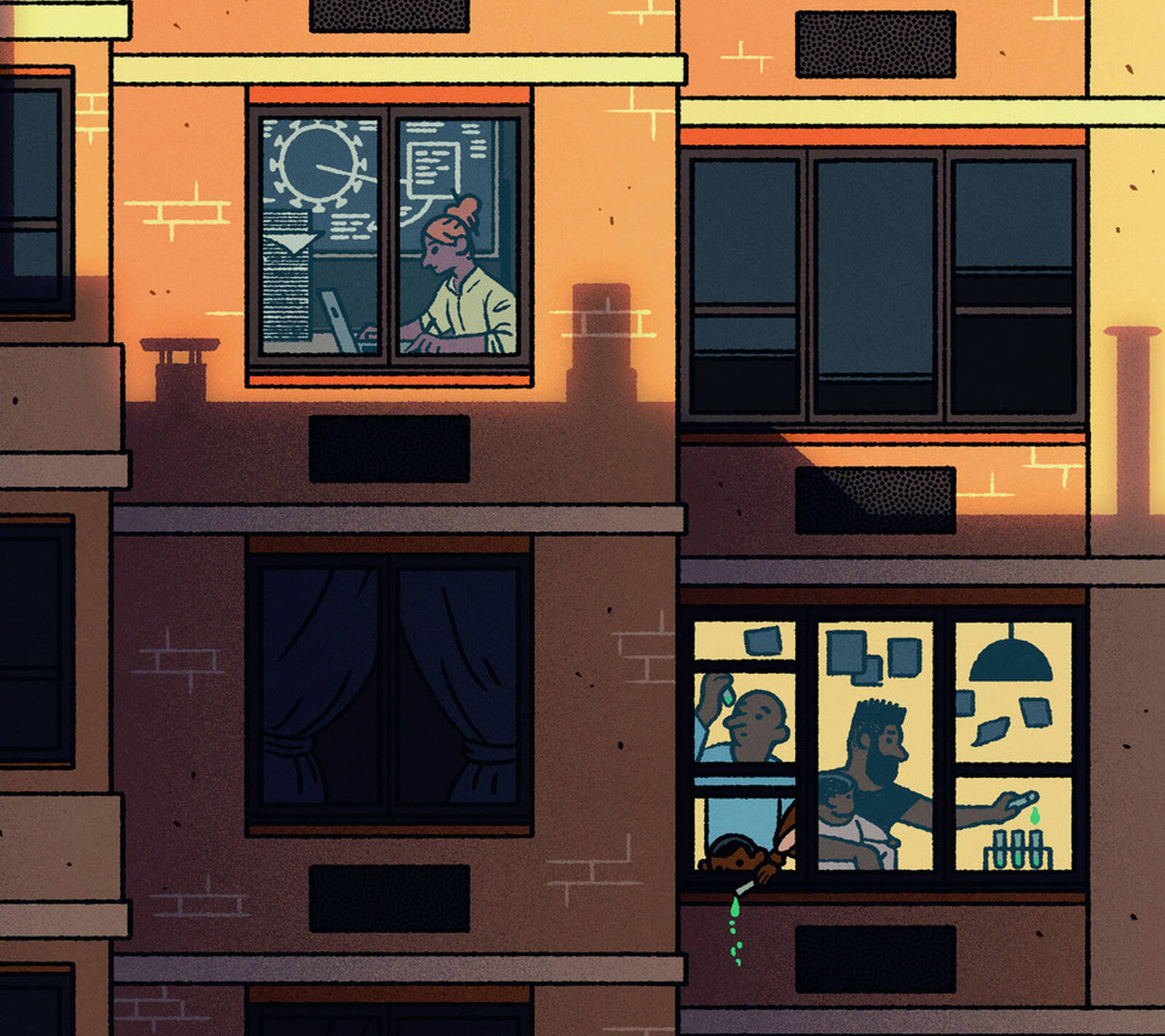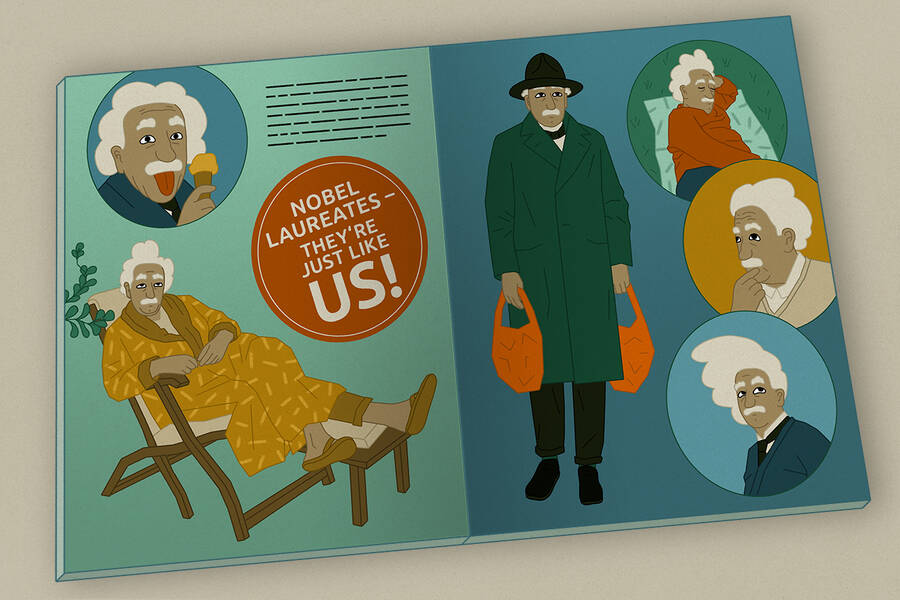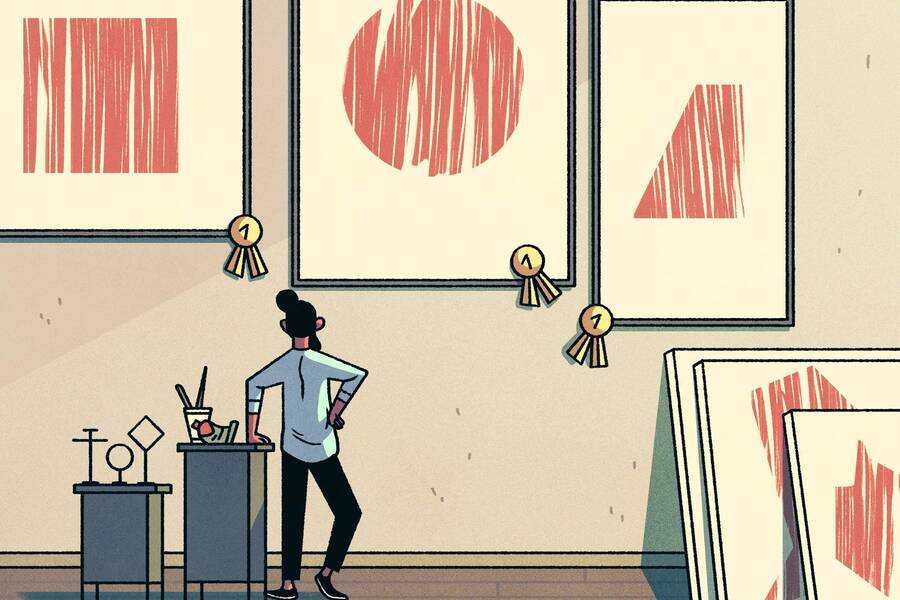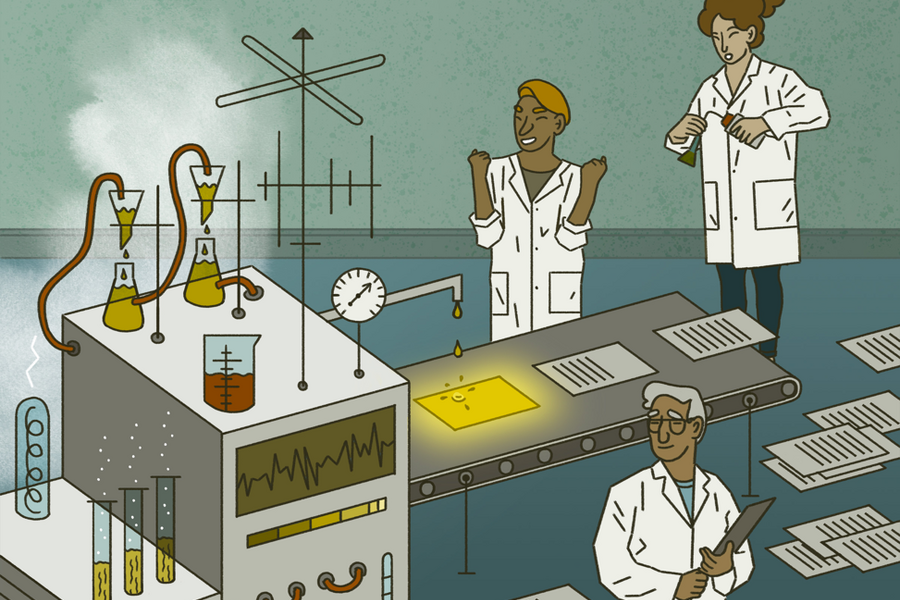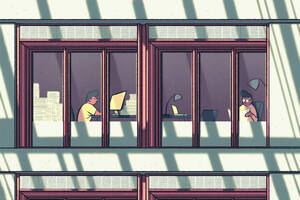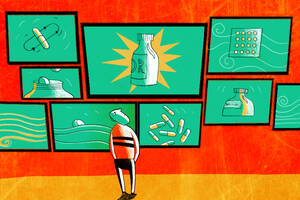Much has been said about how the COVID-19 pandemic could lead to lasting changes in sports, education, office environments, retail, and travel. Less has been said about the impact of the pandemic on the production of scientific research, which often requires its practitioners to spend time in the field or in physical labs.
Dashun Wang, an associate professor of management and organizations, and director of the Center for Science of Science and Innovation at Kellogg (CSSI), wanted to help shed light on how scientific researchers have been affected during the months of lockdown.
“We’re truly in the biggest crisis of our generation,” Wang says, “yet we know so little about how the COVID-19 pandemic is impacting us, both as people and as scientists.”
Alongside nine fellow researchers—including specialists in science, economics, and survey research, one of whom, Yian Yin, is a PhD student at CSSI—Wang set out to help clarify this murky picture.
They disseminated a survey to U.S.- and Europe-based researchers in mid-April and received roughly 4,500 responses. An analysis of the responses revealed clear patterns around who is cutting back their research the most in the midst of the COVID-19 pandemic.
While the survey revealed that the pandemic has slashed work hours for the majority of researchers, the impact varies dramatically by field, and those scientists caring for young children report the steepest declines in productive time by far.
Wang says it’s crucial for institutional leaders and policymakers to take into account the pronounced impact of this moment on researchers—and on those who are caregivers, in particular—as they continue to formulate policy responses to the pandemic.
“These results highlight a specific way this pandemic is affecting the scientific workforce,” Wang says. “They could help shape a more effective response to the pandemic’s impact, in science and beyond.”
Much of Wang’s previous research looks at how scientific discoveries build off of each other. So if productivity is down overall, what does that mean for the future of discovery and innovation?
While the research didn’t address that, Wang says it’s an important question.
“It’s well known that science has grown exponentially over the past century. But there were two visible disruptions to this universal growth: WWI and WWII,” he says. “One big question in my mind is whether we are going through the third disruption of this sort.”
How Has COVID-19 Affected Productivity among Scientists?
When Wang and his coauthors emailed their survey to researchers in mid-April, the world had officially been living amid a pandemic (as declared by the World Health Organization) for about a month.
The researchers chose their survey recipients by randomly selecting 400,000 email addresses from the full list of corresponding authors indexed by the Web of Science publication database over the past ten years. The approximately 4,500 principal investigators at U.S.- or Europe-based institutions who responded within a week represented a range of geographies (all 50 states in the U.S. and 35 countries in Europe), public and private institutions, a wide breadth of research fields (from psychology to biochemistry to civil engineering to political science), various career stages, and tenured and untenured status. The survey also asked about researchers’ gender and age, the number and ages of dependents in their care, and whether the researchers’ labs or institutions were open or closed during the pandemic.
The survey inquired into the number of hours scientists spent doing their jobs before and during the pandemic, and asked them to predict changes in research output in the years to come.
Overall, Wang and his colleagues found a steep drop in the hours worked by the scientists in their sample, from an average of 61.4 hours per week pre-pandemic to 54.4 hours per week in mid-April.
The authors found it interesting, however, that despite the clear decline in the average number of hours worked per week, only a little over half of the researchers actually reported that their work time had decreased. More than a quarter said they’d experienced no change in work time, and about 18 percent had managed to increase their time on the job since the coronavirus has started spreading.
So why did scientists have such different reactions to the pandemic? Which scientists ramped up their work time, and which cut back, and what set those two groups apart?
Many of the differences are attributable to the demands of different fields of research. Research that requires laboratories and time-sensitive experiments—like biochemistry and chemical engineering—has seen the steepest drop in hours during the pandemic, with scientists in these fields devoting roughly 30 to 40 percent less time to their research than before the onset of the pandemic.
On the other end of the spectrum, researchers in the so-called “pen-and-paper” disciplines, like mathematics and statistics, reported the lowest declines in their research time. And those who reported an increase were more likely to work in COVID-related fields, such as medical research.
Women and Caregivers Saw the Largest Drops in Productive Time
When it comes to attributes of individual scientists, the most important predictor of how much a scientist is working during the pandemic is whether or not he or she is caring for young children. Survey respondents with dependents under five years old have seen their research time drop by 16 percent more than that of comparable scientists in their field—a difference that explains more of the variation than any other individual characteristic in the survey.
Overall, female scientists have experienced more of an impact on their research time, with a 4 percent greater contraction in hours than their male counterparts. This is partially attributable to the fact that female survey respondents are slightly more likely to have a young child or children in their care.
Wang acknowledges that, despite having two children under five at home himself (and regularly devoting whole days to their care), he hadn’t expected caregiver status to play such a central role in the study’s findings.
“Why didn’t I think of this?” Wang recalls asking himself when he first saw the results. “We might tend to assume the main impacts on productivity are associated with working from home. But in doing so, we overlook the stark difference between working from home and sheltering at home, with the latter implying that all dependents are also at home and need care.”
How Research Institutions Can Alleviate the Pressures of Childcare
While the study has some limitations in terms of drawing generalized conclusions—less than 2 percent of scientists contacted responded to the survey, for example, and those who responded may have done so because they felt strongly about sharing their views—the findings are still important for policymakers to consider, Wang says.
As research institutions think through policies to support those whose lives have been—and will continue to be—disrupted by the pandemic, Wang says it’s imperative that the outsize role of childcare be taken into account. He points out that for many research institutions, scientists’ work as caregivers is often hidden from view and rarely seen as relevant to the job.
“Beyond policies such as parental leave immediately following birth, childcare is rarely considered in science policies,” he says, “so it may be an uncharted but important new territory for policymakers. It also suggests that unless adequate childcare services are available, researchers with young children will continue to be affected even after institutions reopen.”
He adds that policies meant to give researchers a break during the pandemic could actually exacerbate the inequalities his survey uncovered. Extending the tenure clock, for example, as many universities have done, has been shown
to widen the gap in tenure rates between men and women.
Beyond the world of academic research, Wang’s findings suggest that any analysis of the pandemic’s impact on labor needs to pay careful attention to the role of childcare. “The need to care for dependents is clearly not unique to the scientific workforce,” he says.
